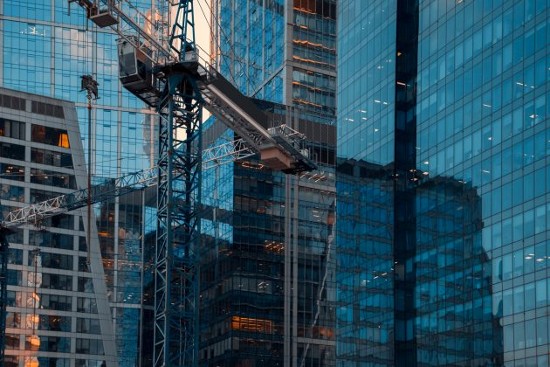What is the built environment? It is the homes we live in, the places where we work, the entertainment venues we visit, and more. In other words – buildings made from wood, brick, concrete, steel and glass.
The carbon contribution of the built environment surpasses that of any other sector of human activity. That’s because the materials sourcing, transportation, construction, and operational aspects of the built environment are all-encompassing. Embodied within everything we construct are the carbon emissions produced to make it. And then after, the cooling, heating, and illumination requirements contribute even more carbon emissions (approximately 27% of the total).
We can’t get away from the built environment because humans need shelter to live and work. There is no going back to caves in our foreseeable future. That’s why the global warming contribution of existing and future built infrastructure needs to be addressed. We need structures to be more material and energy efficient. We need to extend their lifespans rather than tear things down. And when we have to build anew, we need everything we construct to be climate resilient. That means reusing, repurposing, and recycling should be reflected in industry best practices forming the foundational pillars to combat climate change.
Is it too big a stretch for the world of construction to become environmentally aware? Architects understand how to design to conform to a local environment. A salvage track record already exists. Many new buildings incorporate facades from the buildings they have replaced. Recovered stone and marble are readily being reused today. But beyond these progressive practices, the majority of materials used in new builds or renovations are sourced anew.
Making Embodied Carbon Central to Construction
Embodied carbon in buildings was one of the subjects discussed at COP27. A 2022 report by the Global Alliance for Building and Construction (GlobalABC) was tabled at the conference. It referenced Global South locations to show that retrofits of existing structures could provide 60% embodied carbon reductions when compared to new builds.
Launched at COP21 in Paris, the GlobalABC has partnered with the International Energy Agency (IEA) to produce a transition roadmap for construction to achieve net zero by 2050 deriving embodied carbon saving through the use of low-emission energy alternatives and the application of climate-resilient building and construction practices. The roadmap covers eight areas.
- Urban planning to enable reduced energy demand, increase renewable energy capacity and improve infrastructure resilience.
- New buildings to increase the use of net-zero technologies and processes for all new construction.
- Building retrofits to introduce sustainability and climate resilience into renovations of existing buildings.
- Building operations to reduce energy use and emissions through improved management and operations.
- Systems to reduce both the energy needed and the emissions produced by equipment, appliances, lighting and cooking.
- Materials to implement circular economic life-cycle principles for all sourced materials used in building and construction.
- Climate Resilience to reduce the risks related to climate change through better building design, and materials to address structural, water and heat risks.
- Clean energy to source affordable and sustainable energy to reduce the carbon footprint of retrofits and new builds.
Progress Being Made
At COP27 the African Development Bank Group along with GlobalABC launched a fund beginning with an effort to raise US $500 million and eventually up to $10 billion for projects for the Alliance for Green Infrastructure in Africa that embody the above principles for retrofitting existing building infrastructure and new builds.
In 2021, carbon emissions from buildings and construction accounted for 37% of global greenhouse gas (GHG) emissions. In 2022, the carbon contribution of the industry as a percentage of global GHGs is expected to be even higher.
Worldwide, raw materials used in construction are expected to double by 2060 with steel and concrete the major GHG contributors. The worldwide population which just hit 8 billion is expected to rise to 10 by mid-century with 90% of the growth in the Global South. Construction materials will dominate resource consumption and GHG emissions will likely double by 2060. So who is embracing the Global ABC roadmap? Not many. Only 26% of countries today have mandatory and comprehensive building energy codes.
There is some good news in all this doom and gloom forecasting. Builders are making investments in energy efficiency. Between 2020 and 21, the amount of money being spent in this area has risen by 16%. And energy and emissions intensity per building has been falling since 2015.
The rising cost of natural gas for heating, cooling, and other uses is proving to be a catalyst for new construction and existing builds to look at electrification using solar power. It is cheaper than using fossil fuels and the Global South is at a particular advantage when using solar getting almost twice the energy yield per square metre than in the Global North.









